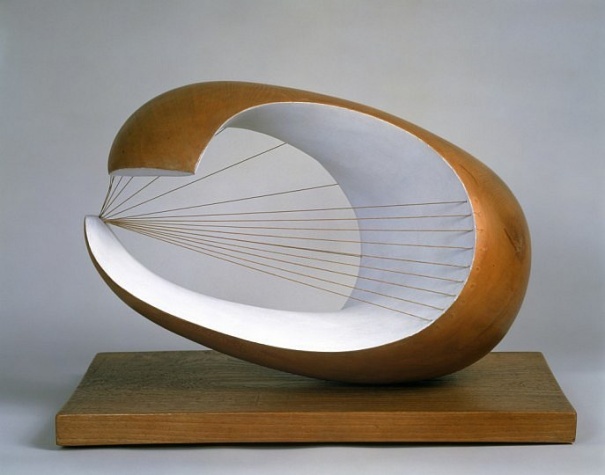As a self-professed art-lover, I’m embarrassed to admit that my interest in abstract sculpture has, for the most part of my life, been negligible. (I’m talking about the ‘Single form with ball’ sculptures of the world, by the way; the big marble spheres or three-dimensional shapes placed, apparently intentionally, in front of culturally significant buildings).
It’s funny because I definitely know and could identify the big boys within the movement…the Henry Moores, the Alexander Calders, the Jacob Epsteins… and I would certainly appreciate the significance of seeing their pieces within a gallery or in a plaza in a European City. But I have always remained emotionally indifferent towards them, and have never really come to love them as much as their two-dimensional counterparts.
Now – it is very possible that my lifelong indifference could originate in prejudice, or even just taste, but I’m inclined to think that there’s more to it than that. How many times, for example, have you been to an exhibition that focuses on modernist sculpture? Or rather, how often are these works of art guaranteed your absolute attention? For me, the Barbara Hepworth exhibition at the Tate Britain marked the first time I have focused on the movement, and (I would say not by coincidence) the first time I have come to emotionally appreciate and connect with these beautiful and evocative pieces of art.
In the Telegraph’s less-than-enthusiastic review of the exhibition, Alastair Sooke criticises the fact that rediscovery is at the forefront of the exhibition, not to mention the fact that the sculptures, so indebted to the natural world, are presented in an enclosed and artificial space. In his opinion, Hepworth is familiar and well-established enough. The fact that the curators chose to present the well-trodden aspects of her career, such as her relationship with fellow artist Ben Nicholson and her commercial awareness, is demeaning to her true reputation and significance.
At this point I just want to ask: who exactly is the audience here? Who is it that is coming along to the Tate and experiencing these incredibly evocative pieces of art? Hepworth enthusiasts might agree that the exhibition offers little fresh perspective, but how many people are really of this clan? Surely the fact that there hasn’t been an exhibition focused on Hepworth in London for nearly half a century is proof enough that her work isn’t that familiar. I would say that the vast majority of the people who have attended this Hepworth exhibition are, like me, art-lovers, and perhaps, like me, enjoyed discovering the world of (Hepworth’s) modernist sculpture in a rare exhibition within a cultural scene dominated by other mediums.
It’s true that the artificially-lit basement of Tate Britain is not the ideal space for Hepworth’s sensuous and tactile works, and as organic extensions of the natural world, there is no way that they would have their full intended effect here. However, this is not something the curators shy away from. Whilst learning about Hepworth’s delicate manipulation of space, the aesthetic satisfaction of viewing the works and the incredible artistic technique behind them, we are constantly reminded of their fascinating relationship with nature. The final room even attempts to recreate one of the most acclaimed outdoor collections of her works in the natural world, and you (almost) come to believe you are actually outside. Having learnt so much about what her art, and this movement as a whole, means and can make one feel, the fact that there is more to explore and find in these natural environments was just an added bonus. For me, it was a rare opportunity and the perfect (re)introduction to sculpture of this sort.
While the exhibition may not offer an original message, it certainly offers a unprecedented focus, particularly in the London art scene, on the emotional power of modernist sculpture. It certainly opened my eyes, ears and heart to the movement anyway, and for those who, like me, have always struggled to connect with innocuous balls made of marble, I would definitely recommend a visit!

